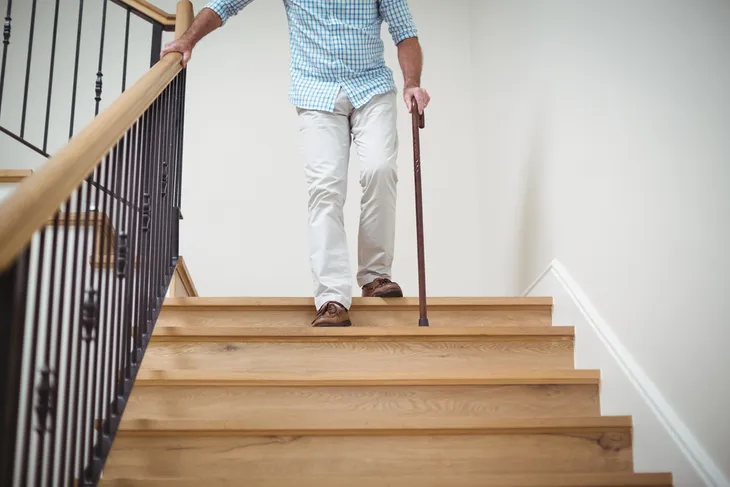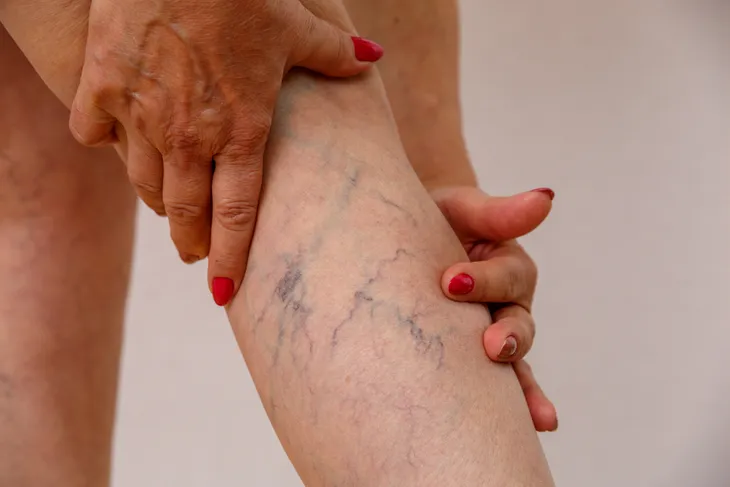- Despite knowing the importance of physical activity, the CDC says that more than 60-percent of American adults don’t engage in the recommended amount.
- Less than 20-percent of Americans have physically active jobs which can make it even more challenging to add movement to your day.
- But is a sedentary lifestyle actually bad for your health? Let’s find out!
Be honest with yourself, how much time do you spend sitting? Do you spend most of your day working on a computer, lying on the couch, or binge-watching Netflix? You might be more sedentary than you think!
A sedentary lifestyle typically involves a lot of sitting and lying down with little to no exercise. And it’s way more common than you may think. But is it actually bad for your health? And if so, what are the potential health complications? We’ll answer that and more in this article!
Is A Sedentary Lifestyle Actually Bad for Your Health?
The short answer is yes, a sedentary lifestyle is definitely bad for your health. According to the World Health Organization (WHO), a sedentary lifestyle causes about 2 million fatalities each year. Besides mortality, a sedentary lifestyle can also contribute to cancer, cardiovascular disease, diabetes, obesity, and a host of other health problems, which we’ll dive into in this article.
Sedentary lifestyles aren’t only a problem for seniors, they’re common in children and adults too. So, let’s dive into all the reasons why a sedentary lifestyle is actually bad for your health.
Weight Gain
When you sit more and move less, your body will burn fewer calories. And the fewer calories you burn, the more likely you’ll gain weight. Healthline says this is precisely why sedentary lifestyles are linked to obesity. The source says studies show that obese individuals sit about 2-hours more each day compared to individuals with a normal weight.
But what if you exercise for an hour each day but are sedentary for the rest of the day? Will that offset the problem? The answer is, no. Healthline points out that one study found that “one hour of intense exercise did not make up for the negative effects of inactivity when other hours were spent sitting.” In addition to daily exercise, it’s also important to incorporate moderate-intensity activity throughout the day to help reduce your risk of certain health problems.
Weakening of the Lower Body
A strong lower body is essential for a stable foundation. Your leg and gluteal muscles play an integral role in all types of movements including upper-body movements, so it’s important to keep these muscles strong and mobile. Unfortunately, a sedentary lifestyle can weaken the lower body.
Better Health explains that sitting for long periods can lead to “weakening and wasting away of the large leg and gluteal muscles.” The source explains that when the lower body is weak, you’re more likely to injure yourself from falls and strains. This is also a serious risk for seniors because it’s harder for older people to recover after a fall.
 wavebreakmedia / Shutterstock
wavebreakmedia / ShutterstockWeakening of the Hips and Back
A sedentary lifestyle can also weaken your hips and back. Better Health says sitting for long periods can cause your hips flexors to shorten. This is a problem because your hip flexors play an important role in good posture and core stability which means weak hips can lead to poor posture, joint pain, and injury.
Sitting for long periods can also weaken your back which also affects your posture and core muscles. Additionally, poor posture can lead to poor spine health which the source says can lead to compression in the discs in your spine. Over time, this can lead to premature degeneration which can be very painful. When sitting it’s important to sit with a good posture and to use ergonomically designed chairs, especially when working at a desk.
Sedentary Lifestyles Affect Heart Health
Sitting for long periods can also affect your heart health and increase your risk for heart disease. The British Heart Foundation says that being inactive can “lead to fatty material building up in your arteries (the blood vessels that carry blood to your organs).” When the arteries that carry blood to your heart become damaged or clogged it can lead to a heart attack. If the arteries that carry blood to your brain become clogged or damaged, it can lead to a stroke.
Furthermore, Better Health shared a study that found “men who watch more than 23 hours of television a week have a 64 percent higher risk of dying from cardiovascular disease than men who only watch 11 hours of television a week.” To put that into perspective, 23-hours per week is only 3-hours per day.
May Increase Risk of Deep Vein Thrombosis
Being sedentary can increase your risk of deep vein thrombosis (DVT). For those that don’t know, DVT is a blood clot in the vein, which typically occurs in the leg. It’s also a medical emergency because it can lead to life-threatening complications.
Sitting for long periods can cause blood clots to form because your muscles will not contract. If the blood clot breaks off, it can travel and cut off blood flow to other parts of your body like the lungs. This is precisely why it’s a medical emergency. Watch out for the warning signs of DVT which includes throbbing or camping in one leg, swelling in one leg, warm or darkened skin around the painful area, and swollen veins that are hard or sore to the touch.
May Increase Risk of Depression and Anxiety
Being sedentary doesn’t only affect your physical health, but it can negatively impact your mental health too. Verywell Mind says research shows links between long periods of sitting and depression, anxiety, and chronic stress.
Tanya J. Peterson, MS, NCC, DAIS, a mental health educator and author, told the source that sitting for more than 8-hours a day can decrease motivation, contribute to fatigue, and make it harder to manage mental health problems. So not only can a sedentary lifestyle increase your risk of anxiety and depression, but it can also make it hard to manage it. The source also notes that even with exercise, “the negative effect on mental health was not addressed unless sitting time was decreased as well.”
May Increase Risk of Type 2 Diabetes
Regular physical activity is essential for your overall health but it also helps improve how your body uses glucose (sugar), explains Diabetes Canada. When you exercise regularly, your body can control your blood sugar better which can help delay or prevent type 2 diabetes.
So, when you’re inactive, your blood sugar levels rise, causing a resistance to the hormone that regulates glucose in your body and in turn, greatly increases your risk of type 2 diabetes. The source also notes a study that found even brief periods of inactivity (such as being inactive due to illness, hospitalization, or bed rest), can also greatly increase your risk of diabetes.
May Increase Risk of Cancer
Physical activity can also help prevent certain types of cancer. According to the National Cancer Institute, there is strong evidence that suggests higher levels of exercise are linked to a lower risk of bladder cancer, breast cancer, colon cancer, endometrial cancer, esophageal cancer, kidney cancer, and stomach cancer. But why is this the case?
The source says physical activity can have biological effects on the body which may be the reason why it helps. For example, exercise can help reduce inflammation, improve the immune system, support the digestive system, lower hormones, and help prevent obesity. All of this can play a role in reducing your risk for many types of cancer.
May Increase Risk of Varicose Veins
Johns Hopkins Medicine explains that varicose veins are enlarged, twisted veins. While they can develop anywhere on your body, they most commonly develop on the legs. They’re not usually a serious medical concern but they can be uncomfortable and may lead to more serious problems (such as blood clots). Some people are self-conscious about them too.
Varicose veins are caused by increased blood pressure in the veins and one of the common culprits is prolonged sitting. This is because sitting for long periods can cause blood to pool in your leg. Sitting with your legs crossed or bent can also increase your risk further.
How to Be Less Sedentary at Home
Despite knowing the importance of physical activity, the CDC says that more than 60-percent of American adults don’t engage in the recommended amount. What’s more, about 25-percent of adults in the U.S. aren’t active at all. The good news is being less sedentary at home doesn’t have to be complicated. There are simple ways to add exercise and movement to your day.
For starters, housework, gardening, or any physical work you can do around the home is a great way to get your body moving. When watching TV, you should get up every once in a while and move around, do gentle stretching, or lift some weights. Walking around when talking on the phone is another simple way to add more movement to your day. You can also consider going for a walk in your neighborhood, doing at-home workouts, or investing in exercise equipment for your home.
How to Be Less Sedentary at Work
The National Library of Medicine says that less than 20-percent of Americans have physically active jobs. Having a desk job can make it more challenging to move throughout the day but there are simple things you can do to get your body moving at work too.
For starters, you should aim to get up from your desk at least once an hour. Take this opportunity to use the washroom, get some water, or just stand and stretch for a few minutes.
You can also add movement to your day by taking the stairs instead of the elevator, standing when talking on the phone, and walking during your lunch break. You can also consider having walking meetings with co-workers and standing up and walking to a coworker’s office instead of sending them an email. Finally, you should also consider talking to your company to find out if they offer stand-up or treadmill desks.














